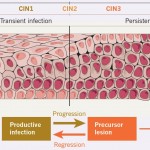 New class offering: Cancer Biology, BL4752, Spring 2016
New class offering: Cancer Biology, BL4752, Spring 2016
• Do you know that cancer is the second leading cause of death?
• In 2013 alone, 14.9 million people had cancer & 8.2 million people died from cancer
• Do you know of anyone who has cancer?
• Are you interested in learning what causes cancer or the molecular changes that lead to cancer?
• Take BL 4752; learn about the biology of cancer with Dr. Tumban
• Course Objectives: Students will have an understanding of:
• the biological/non-‐biological agents that cause cancer
• how these agents contribute to different cancers
• the molecular mechanism(s) leading to the disease
• how the circulatory and lymphatic systems affect the disease
• current treatment and therapeutic approaches
The prereqs are BL3012 Essential Cell Biology or BL4370 Cell Biology or BE2400 Cellular and Molecular Biology.
 Dr Tang’s research is featured this week on Michigan Tech’s
Dr Tang’s research is featured this week on Michigan Tech’s